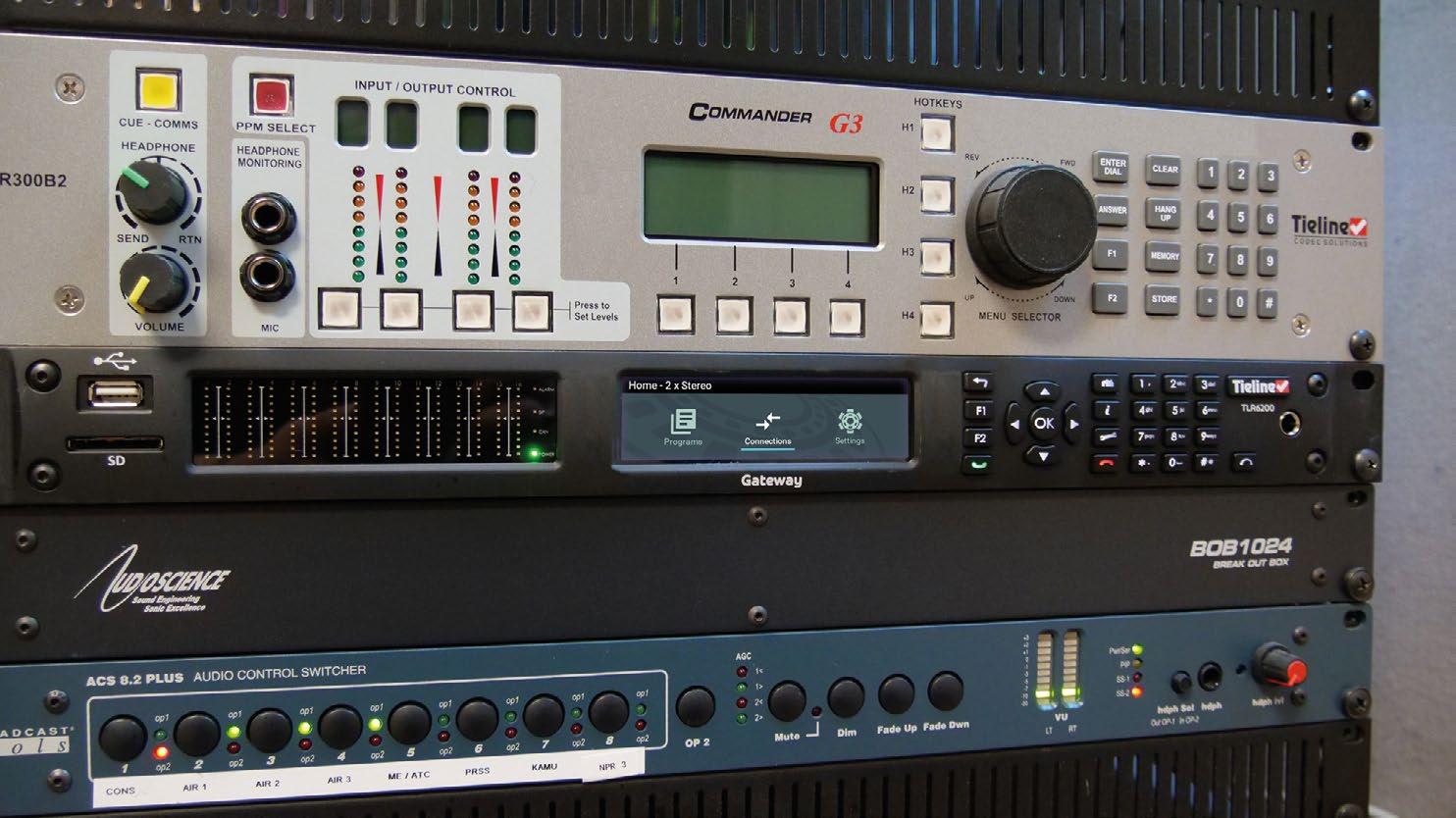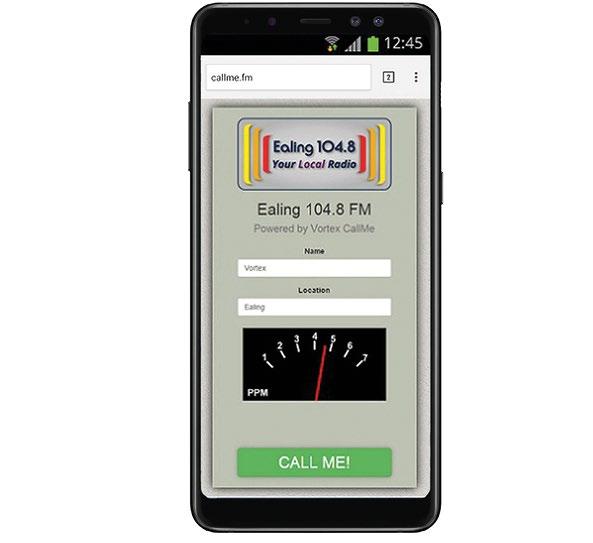
4 minute read
Gateway delivers flexibility for Tarleton State
Writer Lance McFarlin
General Manager, KTRL/KXTR, Tarleton State University
Info
Contact Doug Ferber at Tieline at 1-888-2116989. For international queries contact Charlie Gawley in Western Australia at 618-9413-2000 or visit www. tieline.com.
Above Right
Legacy and new Tieline equipment in the rack.
Gateway delivers flexibility for Tarleton State
Texas university turns to Tieline as a proven performer
I manage two stations at Tarleton State University in Stephenville, Texas, and we have used Tieline’s Report-IT app and iMix G3, Commander and Merlin codecs in the past.
Recently we purchased the Tieline Gateway 8 to use for sports and other remote broadcasts on KTRL(FM) 90.5 MHz and KXTR(LP) 100.7 MHz. Some Gateway channels are hooked up to a Logitek console in one studio via a JetStream Mini, and others are hooked up to the Logitek console in our other studio. Codec outputs are networked across to all three of our Logitek consoles, including a production suite.
We selected the Tieline Gateway 8 as it streamlined our setup by using a single codec for remotes on both stations. Tieline’s upgrade path allows us to expand channel capabilities via software upgrades in future as required.
My “go-to”
The new Gateway 8 replaces an older Commander codec being used for remote broadcasts across our campus and community. It also replaces a Tieline Merlin in preparation for the football season here at Tarleton State.
We use the Gateway to send live audio back to the station and send station mix-minus audio to the remote site. The Gateway delivers flexibility. We can handle two sports broadcasts on both stations or be doing a remote broadcast on campus on one station, and a sports broadcast on the other.
Tieline is my go-to for remotes. Its integration with older equipment and being able to use the Report-IT app are major reasons. We replaced our iMix G3 with the ViA, and our Athletics department has done the same, so we are using Tieline ViAs for all our remotes nowadays. We will use the Commander and iMix G3 that they replaced as a backup STL.
The transition was pretty simple. Like the Gateway, our Logitek console uses RJ45 for the ins and outs. With the Merlin and Commander we had to use RJ45-to-XLR adapters, but with the Gateway we can get rid of those and go straight in/out.
The university has a fiber-based IP network, and we use AT&T hotspots to connect on-site. Our athletics team uses AT&T and Verizon. Connections are reliable in this area, but with sports broadcasts, that can depend on where an away game is located.
Quality and functionality is the best part about broadcasting using IP codecs. When you compare codecs to a cellphone or POTS line, the overall quality difference with Tieline is undeniable.
During the pandemic we worked with a staff of three, myself and two student workers. We actually used Report-IT, along with our Commander and eventually Gateway more than ever before. It was the best way for us to put students on the air. They can download the TieServer Console and Report-IT apps on their phone and we could put them on the air in a snap.
The Tieline Toolbox Web-GUI for configuration and control is easy to use and very helpful for configuration and control. Tieline’s Cloud Codec Controller is also something we plan to use for remote control of equipment. We have a lot of students and play-by-play announcers doing broadcasts who are not very familiar with the equipment, so being able to control everything remotely would be incredibly useful.
Tieline’s quality is great. It is the best of any other options we have used in the past and we have had nothing but great experiences with Tieline’s technical support. We have had very positive feedback from our engineer and all of the people who use the equipment on a weekly basis. They have been some of the most reliable and best working pieces of equipment we have.


Tech Update Angry Audio Introduces CallMe
Angry Audio, the self-described broadcast “gadgets and gizmos” company in Nashville, has a collaboration with U.K.-based Vortex Communications Ltd., makers of the CallMe family of IP audio codecs, to offer those in the U.S. market.
Angry’s owner Michael “Catfish” Dosch described CallMe: “It sounds amazing, it’s simple, and it’s perfectly priced.” CallMe is a codec ecosystem that enables users to connect in several ways: browser-to-browser, browser-to-hardware and hardware-to-hardware.
In its hardware iteration, the small CallMe-T box is a simple IP codec that Dosch said doesn’t require confusing controls, menus or options. It can be used by anyone and is suitable for studios, remote kits or fixed tie-line applications. It has a USB port, so remote broadcast setup just requires connecting a headset.
Meanwhile, the cloud-based CallMe Click & Connect software iteration runs in any standard browser, there are no apps to install. Anyone with a smartphone, the company says, has a broadcast codec in their pocket and they know how to use it. The user can be on the air by emailing or texting a link to anyone in the world.
All versions use the Opus algorithm, which delivers 15 kHz bidirectional audio. It can also fall back to G.722 for compatibility with other codecs.
For information, contact Angry Audio at 1-615-763-3033 or visit www. angryaudio.com.








